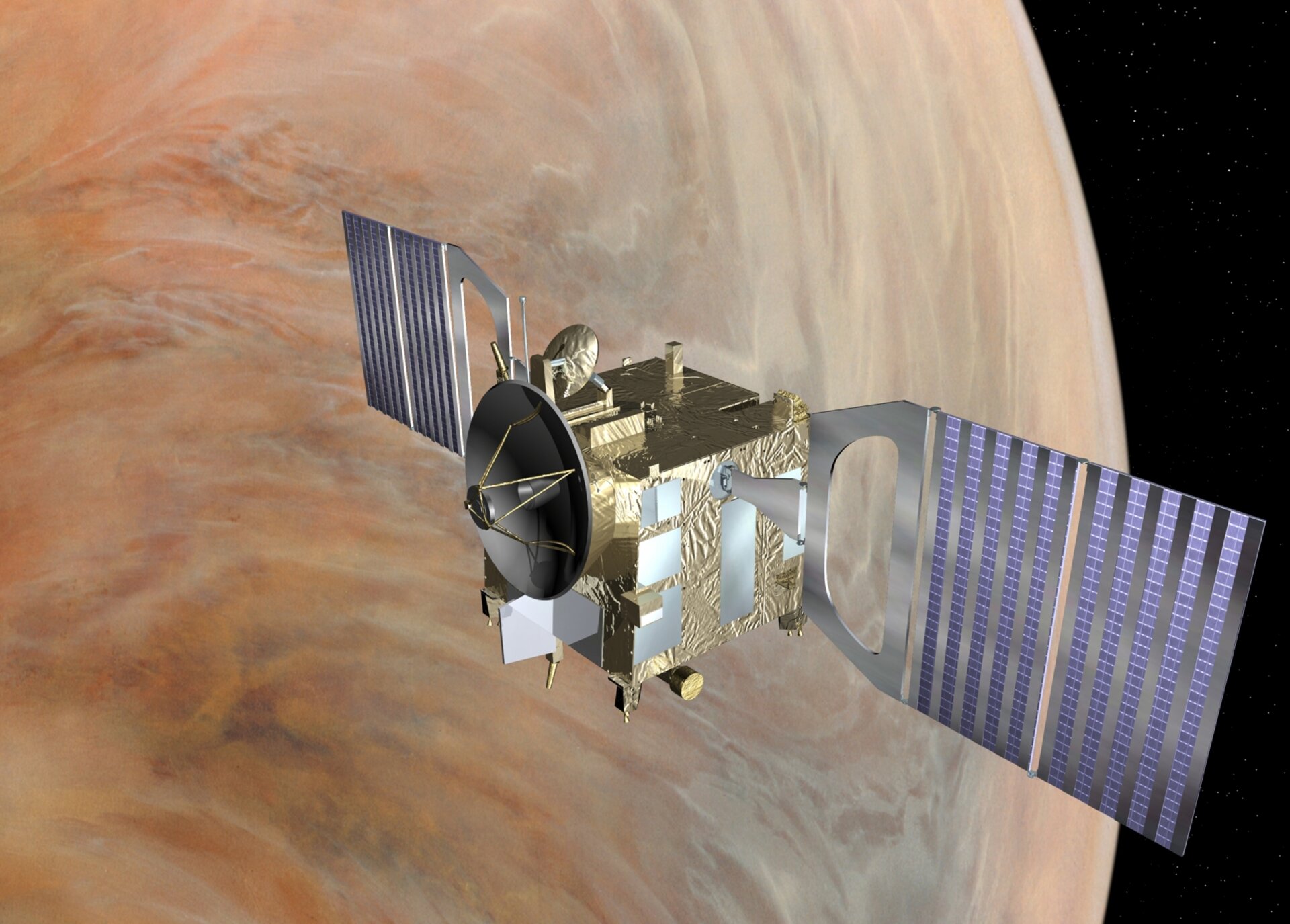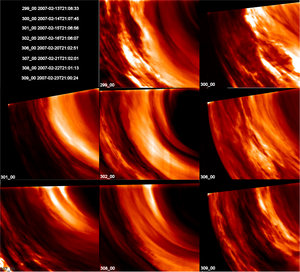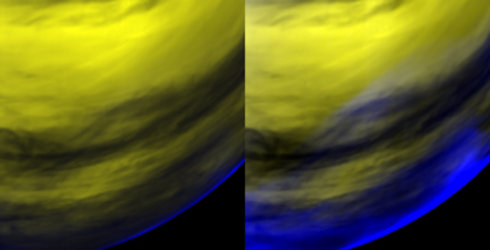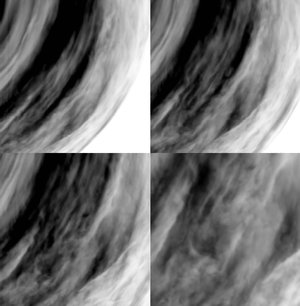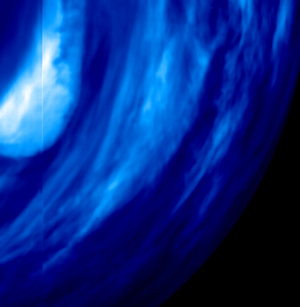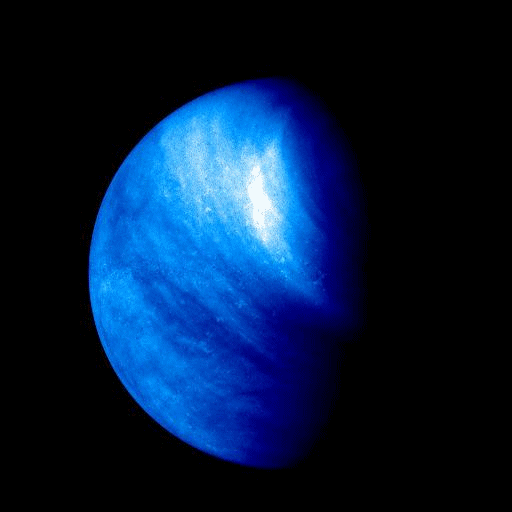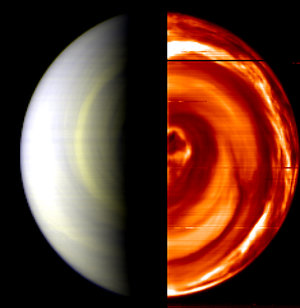New isotope molecule may add to Venus’ greenhouse effect
Planetary scientists on both sides of the Atlantic have tracked down a rare molecule in the atmospheres of both Mars and Venus. The molecule, an exotic form of carbon dioxide, could affect the way the greenhouse mechanism works on Venus.
The discovery is being announced today at the annual meeting of the American Astronomical Society’s Division of Planetary Sciences in Orlando, Florida. Its presence could affect the way the greenhouse mechanism works on Venus.
The mystery began back in April 2006, soon after ESA’s Venus Express arrived at the second planet in the Solar System.
A European team including members from France, Belgium and Russia lead by Jean-Loup Bertaux, Service d'Aeronomie du CNRS, France and Ann-Carine Vandaele, Institut d'Aeronomie Spatiale de Belgique, were using their Infrared Atmospheric Spectrometer (SOIR) instrument to measure solar occultations.
To do this, the instrument watches the Sun set behind Venus, allowing the scientists to study the way specific wavelengths of light are absorbed by the planet’s atmosphere. These wavelengths and the level of absorption then give away the identity and amount of gases in the atmosphere.
The team saw an unidentified signature at 3.3 micrometres in the mid-infrared region of the spectrum. “It was conspicuous and systematic, increasing with depth in the atmosphere during the occultation, so we knew it was real,” says Bertaux.

The team kept their discovery confidential as they attempted to identify the molecule responsible. They thought at first that it must be an organic molecule. These molecules contain carbon and hydrogen. However, none of the known organic molecules fitted well with the observations.
Then, in December 2006, Mike Mumma of NASA’s Goddard Space Flight Center, Maryland, enquired whether the SOIR team was seeing anything special on Venus at 3.3 microns. He had discovered an unidentified spectral signature at that wavelength using telescopes on Hawaii pointing at Mars. The two teams compared the absorption signatures: they were identical.
This was a big clue. Both the atmospheres of Mars and Venus are composed of 95% carbon dioxide, although Venus’s atmosphere is much thicker than the one at Mars. The American team suggested that the signature could be coming from an isotope of carbon dioxide, where one oxygen atom is ‘normal’, with eight protons and eight neutrons, while the other has eight protons and ten neutrons. Such an isotope makes up about 1% of carbon dioxide on Earth, the rest contains two normal oxygen atoms.
However, no one had previously seen the molecule absorb at 3.3 micrometres. An investigation by three independent groups, one led by Mumma in America, Sergei Tashkun and Valery Perevalov at Tomsk State University, Russia, and Richard Dahoo at Service d'Aéronomie du CNRS, France, all came to the same conclusion. The signature could be caused by a rare transition only possible in the isotope.
The different weights of the oxygen atoms allow the molecule to alter its vibration in two ways simultaneously, whereas normal molecules can only change one state at a time.
This rare transition allows it to absorb even more energy and so contribute even more to the greenhouse effect on Venus. On Earth, however, there is
Notes for Editors:
The findings appear in: ‘First Observation of 628 CO2 isotopologue band at 3.3 micrometres in the atmosphere of Venus by solar occultation from Venus Express’ by J-L Bertaux, A. C. Vandaele, V. Wilquet, F. Montmessin, R. Dahoo, E. Villard, O. Korablev, A. Fedorova.
For more information:
Jean-Loup Bertaux, Service d'Aéronomie du CNRS, France
Email: Jean-Loup.Bertaux @ aerov.jussieu.fr
Ann Carine Vandaele, The Belgian Institute for Space Aeronomy
Email: A-C.Vandaele @ aeronomie.be
Michael Mumma, NASA Goddard Space Flight Center, USA
Email: Michael.J.Mumma @ nasa.gov















 Germany
Germany
 Austria
Austria
 Belgium
Belgium
 Denmark
Denmark
 Spain
Spain
 Estonia
Estonia
 Finland
Finland
 France
France
 Greece
Greece
 Hungary
Hungary
 Ireland
Ireland
 Italy
Italy
 Luxembourg
Luxembourg
 Norway
Norway
 The Netherlands
The Netherlands
 Poland
Poland
 Portugal
Portugal
 Czechia
Czechia
 Romania
Romania
 United Kingdom
United Kingdom
 Slovenia
Slovenia
 Sweden
Sweden
 Switzerland
Switzerland

























